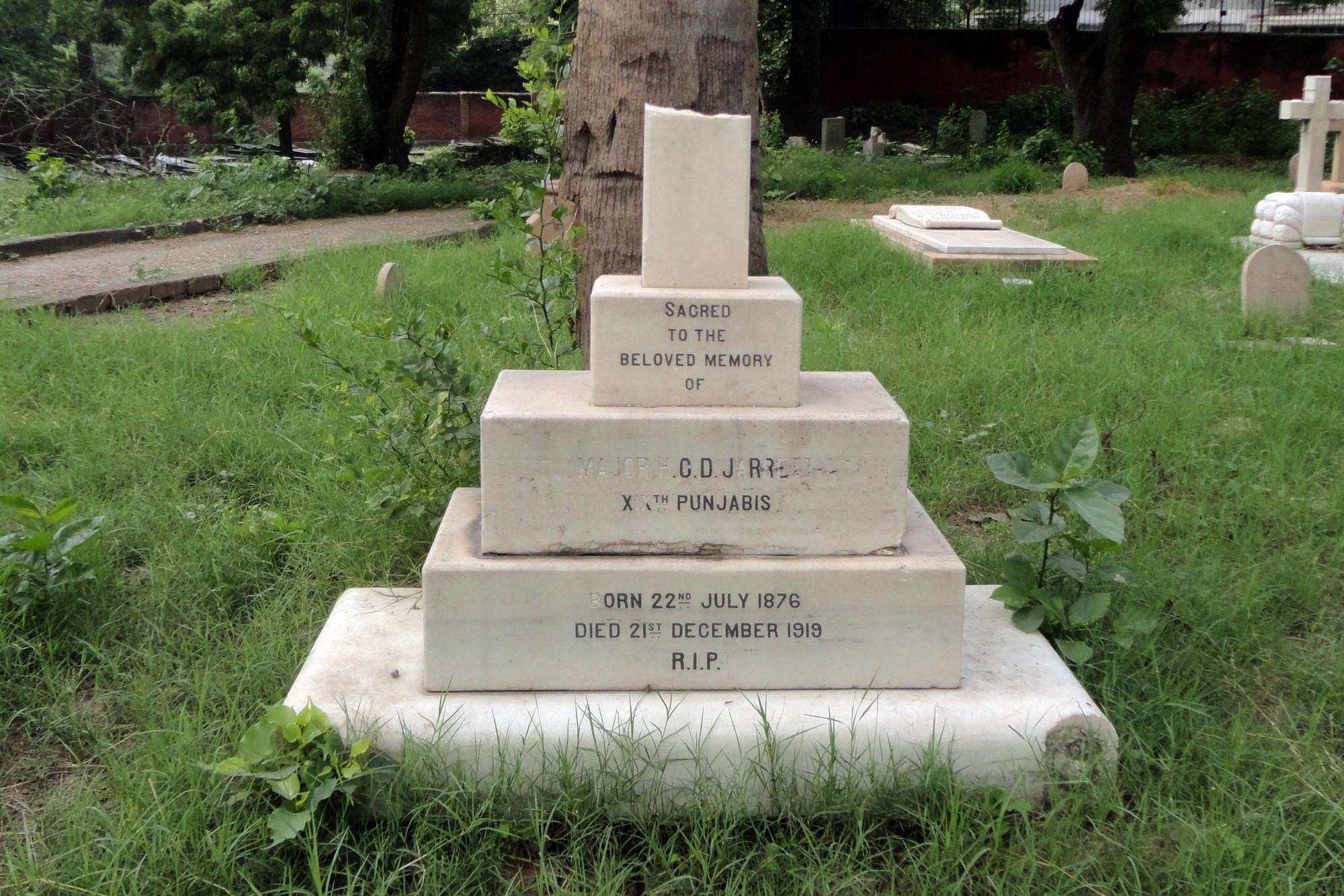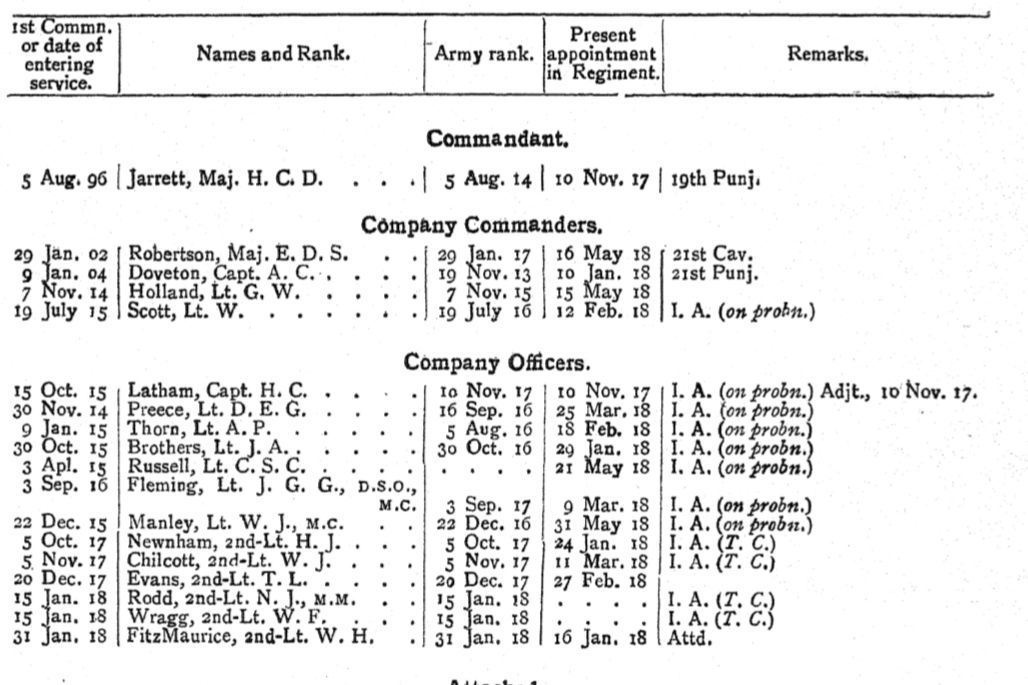This article is about the short-lived 2nd Battalion 21st Punjabis and will help you to research the Battalion and the soldiers who served with it during the First World War. I’ve written a separate article for the 1st Battalion 21st Punjabis and a series of guides to help you research soldiers who served in the Indian Army. To view the guides click on the blue links below:
The 2nd Battalion 21st Punjabis in the First World War
Lineage: The 2nd Battalion 21st Punjabis was formed at Jubbulpore (Jabalpur, Madhya Pradesh, India) on 16 October 1917 and disbanded on 1 April 1922. For a history of the Regiment’s lineage see my page on the 1st Battalion 21st Punjabis.
Class Composition of Battalion in April 1919: 2 Companies of Punjabi Muslims, 3/4 of a Company of Sikhs, 1/4 Company of Dogras and 1/2 a Company of Pathans.
The 2nd Battalion 21st Punjabis was a short-lived Indian infantry battalion formed at Jubbulpore (Jabalpur, Madhya Pradesh, India) on 16 October 1917. When the Battalion was first inspected on 6 February 1918 it was reported that it ”consists of a nucleus and a few recruits and at present only squad drill is being carried out”. The Battalion’s first commanding officer was Major Hubert Cecil Delacour Jarrett who was appointed from the 19th Punjabis on 10 November 1917. Jarrett died of pneumonia on 21 December 1919 and was buried in the Nicholson Cemetery in Delhi. In 2013 I visited the cemetery and photographed Major Jarrett’s grave which now lies in a sorry state. 

General observations: This battalion has made great progress since receipt of orders for mobilisation and the appointment of Lieutenant-Colonel Sherlock as a Commanding Officer. No effort has been spared to push on training as much as possible. This battalion was much hampered in its progress by the transfer shortly before orders for mobilisation of some 300 Mianwalis from the 124th Baluchis: they received little or no training, their discipline was poor and they had indifferent Non-Commissioned Officers and young and inexperienced direct commissioned Indian Officers who were useless. At present standards the battalion is fit for active service.
The Battalion served as part of 7th Indian Infantry Brigade, Waziristan Force on the North West Frontier and there is a war diary covering the period between late October 1920 and February 1921. The Battalion spent the majority of its time at Tank and I have transcribed some of the war diary below. In the July 1921 Indian Army List, the Battalion was still stationed in Waziristan. While serving on the North West Frontier the Battalion’s Depot was based at Jubbulpore. The 2nd Battalion 21st Punjabis was disbanded on 1 April 1922.
War Diary of the 2nd Battalion 21st Punjabis
There is only one war diary for the Battalion which hasn’t been digitized and can only be viewed at the National Archives. I have a copy of the war diary and have transcribed some entries below.
- Date: 29 October 1920 – 28 February 1921
- 7th Indian Infantry Brigade, Waziristan Force
- Reference: WO 95/5399
- Notes: The only war diary for the 2nd Battalion 21st Punjabis contains good information regarding the Battalion’s activities on the North West Frontier. British officers are mentioned throughout.
Further Sources for the 2nd Battalion 21st Punjabis
For information concerning British and Indian officer who served with the 2nd Battalion 21st Punjabis, the Indian Army List should be consulted. The confidential reports of the Battalion can be seen at the British Library: Confidential Reports on Regiments etc. These confidential reports also contain the annual reports of the British officers serving with the Battalion.
Extracts from War Diary of the 2nd Battalion 21st Punjabis
29 October 1920 – 28 February 1921, Waziristan Force, WO 95/5399
02-03 November 1920 – Tank – Night – Intermittent firing of shots and very lights.
05 – 06 November 1920 – Tank – Night – Alarm sounded 21.45 hours. Considerable firing, Very lights but few shots. “No parade” sounded 22.45 hours.
19 November 1920 – Tank – Night – No operations. Work on defences continued. Alarm sounded 21.45 hours. Sleeping in guards assembled in alarm stations and remainder in quarter guard. 22.15 hours “all clear sounded”.
06 December 1920 – Tank – No operations. No 5048 Sepoy Kirpa Ram “D” Company accidentally shot 08.15 hours. Died before reaching hospital. Salvaging of wire around Constabulary Fort continued. Major J. S. Nichols MC handed over command of Tank. All work at aerodrome finished.
09 January 1921 – Tank – C Company relieved D Company at aerodrome. D Company returned Tank. Captain A. Schneider and 2nd Lieutenant L.W.F. Farmer no at aerodrome. 11.30 hours all detachment stood by as information received the body of raiders were intercepted at Zam Post. Stood down at 12.30 hours night 9/10… 10.00 hours to 11.00 hours considerable firing direction of No.5 Picquet and Tank City. 11.00 hour Information received that Tank City Station was being attacked and required help. Stood to again. 11.30 hours information received that raiders had retired and no assistance necessary. 11.35 hours stood down. Occasional shorts throughout night.
20 February 1921 – Tank – D Company returned to Tank. C Company under 2nd Lieutenant L. F. W. Farmer took over aerodrome. Received report 18.00 hours of probable attack of enemy during night 20/21. Quiet night. No operations.
28 February 1921 – Tank – No operations. All men on fatigue. Bushes cleared [?] in vicinity of wire between vicinity of wire between Nos. 4 and 5 picquets. Occasional shots from picquets during night 28/1 March.
